|
|
|||||
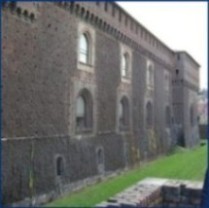 Milan
was declared capital of the Cisalpine Republic when Napoleon conquered
Lombardy in 1796 and later the capital of the Reign of Italy. Milan
was declared capital of the Cisalpine Republic when Napoleon conquered
Lombardy in 1796 and later the capital of the Reign of Italy. The Austrians arrived in Milan at the start of the 18th century bringing along the culture o 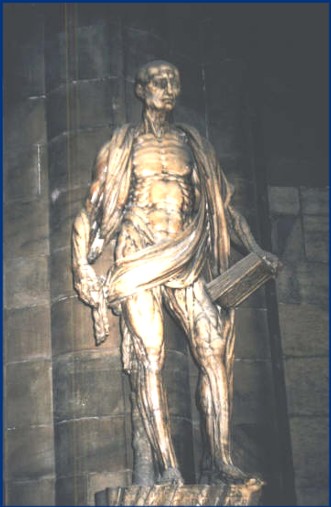 f the lyric opera. The Teatro alla Scala was built on the
site of the Church of Santa Maria della
Scala, and has showcased the debut of some of the greatest names in opera:
Rossigni, Bellini, Toscanini, and Giuseppe Verdi. The annexed Scala Museum
contains a collection of paintings, drafts, statues, costumes, and other
documents regarding opera and La Scala's history. When the Austrians were
driven out of Milan in 1859, the city and the rest of Lombardy were
incorporated into the Kingdom of Piedmont, which then became the Kingdom of
Italy in 1861. Milan was immediately chosen as the economic and cultural
capital of Italy, and has maintained this title ever since. f the lyric opera. The Teatro alla Scala was built on the
site of the Church of Santa Maria della
Scala, and has showcased the debut of some of the greatest names in opera:
Rossigni, Bellini, Toscanini, and Giuseppe Verdi. The annexed Scala Museum
contains a collection of paintings, drafts, statues, costumes, and other
documents regarding opera and La Scala's history. When the Austrians were
driven out of Milan in 1859, the city and the rest of Lombardy were
incorporated into the Kingdom of Piedmont, which then became the Kingdom of
Italy in 1861. Milan was immediately chosen as the economic and cultural
capital of Italy, and has maintained this title ever since.The Lombard metropolis holds several prominent titles on the global stage. It is one of the major financial and business centres of the world and the powerhouse of Italy, boasting the 4th highest GDPs in Europe and is home to the Italian Stock Exchange (the Borsa Italiana). Plus it has Italy’s largest industrial area producing textile and garments, automobiles (Alfa Romeo), industrial tools, and heavy machinery. |
|||||
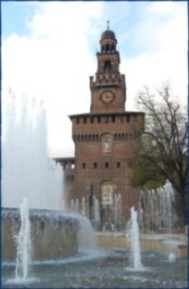 Milan
is also considered as one of the world capitals of design and fashion,
showcasing the headquarters of some of the leading international designers,
such as, Dolce & Gabbana, Gucci, Versace, Luis Vuitton, Cartier, Chanel, etc.
It is famous for its prestigious boutiques and luxury shops found along Via
Montenapoleone, Via della Spiga and Via Sant'Andrea, Via Manzoni, and the four-storey
Galleria Vittorio Emanuele II glass-domed arcade within the famous Fashion
Quadrilatero. For other types of shopping, the very popular Saturday morning
Fiera di Senigallia flea market in Viale d'Annunzio, offers Indian, South
American and African craftwork; new and second-hand clothes, old furniture,
perfumed candles, among other items. Milan
is also considered as one of the world capitals of design and fashion,
showcasing the headquarters of some of the leading international designers,
such as, Dolce & Gabbana, Gucci, Versace, Luis Vuitton, Cartier, Chanel, etc.
It is famous for its prestigious boutiques and luxury shops found along Via
Montenapoleone, Via della Spiga and Via Sant'Andrea, Via Manzoni, and the four-storey
Galleria Vittorio Emanuele II glass-domed arcade within the famous Fashion
Quadrilatero. For other types of shopping, the very popular Saturday morning
Fiera di Senigallia flea market in Viale d'Annunzio, offers Indian, South
American and African craftwork; new and second-hand clothes, old furniture,
perfumed candles, among other items.The significant historical attractions are contained between the two landmark sites - the world's largest Gothic cathedral (Il Duomo) and the majestic Gothic-Renaissance style Castello Sforzesco whose central tower (Torre del Filarete) dominates one of the most beautiful landscapes in Milan. |
|||||
There is, the church of Santa Maria delle Grazie with many arts of Bramante and
his work in the beautifully luminous tribune, plus, the famous Cenacolo
Vinciano (Last Supper) fresco painted by Leonardo da Vinci; the Royal Palace
dating ba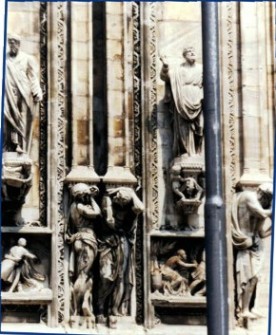 ck to 1100; the 25 meters high Arco della Pace in the middle of Piazza
Sempione; the ancient Romanesque style Basilica
di Sant' Ambrogi, originally called Basilica Martyrum, built in dedication to
the Saint patron of Milan; and the 17th-century Pinacoteca di Brera Palazzo
which houses one of Italy's finest collections of medieval and Renaissance art. ck to 1100; the 25 meters high Arco della Pace in the middle of Piazza
Sempione; the ancient Romanesque style Basilica
di Sant' Ambrogi, originally called Basilica Martyrum, built in dedication to
the Saint patron of Milan; and the 17th-century Pinacoteca di Brera Palazzo
which houses one of Italy's finest collections of medieval and Renaissance art.Besides, its evident historical culture, Milan possesses an entertaining nightlife. The Ticinese-Navigli district southwest of Milan is popular for its trendy dance clubs, cosy pubs and sandwich bars, while the Brera district offers many art galleries, small clubs, and restaurants. Plus, there is the popular "Musica in Metro" program, a series of summer concerts performed by local music students in subway stations. Adding to that, there are traditional operas, theatre, ballet, recitals, concerts or cinema. Like many Italian cities, there is much to learn, appreciate, enjoy and do here. |
|||||
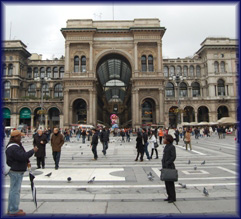 |
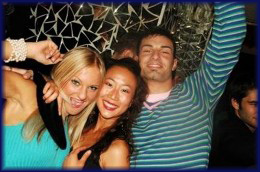 |
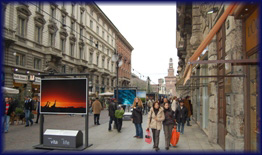 |
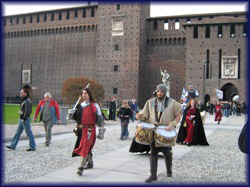 |
||
| School Facilities | |||||
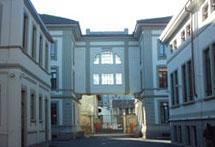 Scuola
Leonardo da Vinci Centre:
is located inside a student campus in the Navigli zone, full of artists,
bars and cafes. It is a well connected to the city center by subway and
by bus. All classrooms have air conditioning, and the campus boasts
a park, a bar and a refectory. There is also free internet access
available. Scuola
Leonardo da Vinci Centre:
is located inside a student campus in the Navigli zone, full of artists,
bars and cafes. It is a well connected to the city center by subway and
by bus. All classrooms have air conditioning, and the campus boasts
a park, a bar and a refectory. There is also free internet access
available. |
|||||
 Milan
or ‘Milano’ is located in the plains of the Lombardy region of Italy which
has a humid subtropical climate with typically damp cold winters and warm
humid summer. It is considered Italy’s second largest city with a population
of about 1.3 million, and Italy’s largest metropolitan area with an urban
area of about 4.5 million featuring ethnic representation from over 145
countries.
Milan
or ‘Milano’ is located in the plains of the Lombardy region of Italy which
has a humid subtropical climate with typically damp cold winters and warm
humid summer. It is considered Italy’s second largest city with a population
of about 1.3 million, and Italy’s largest metropolitan area with an urban
area of about 4.5 million featuring ethnic representation from over 145
countries. 